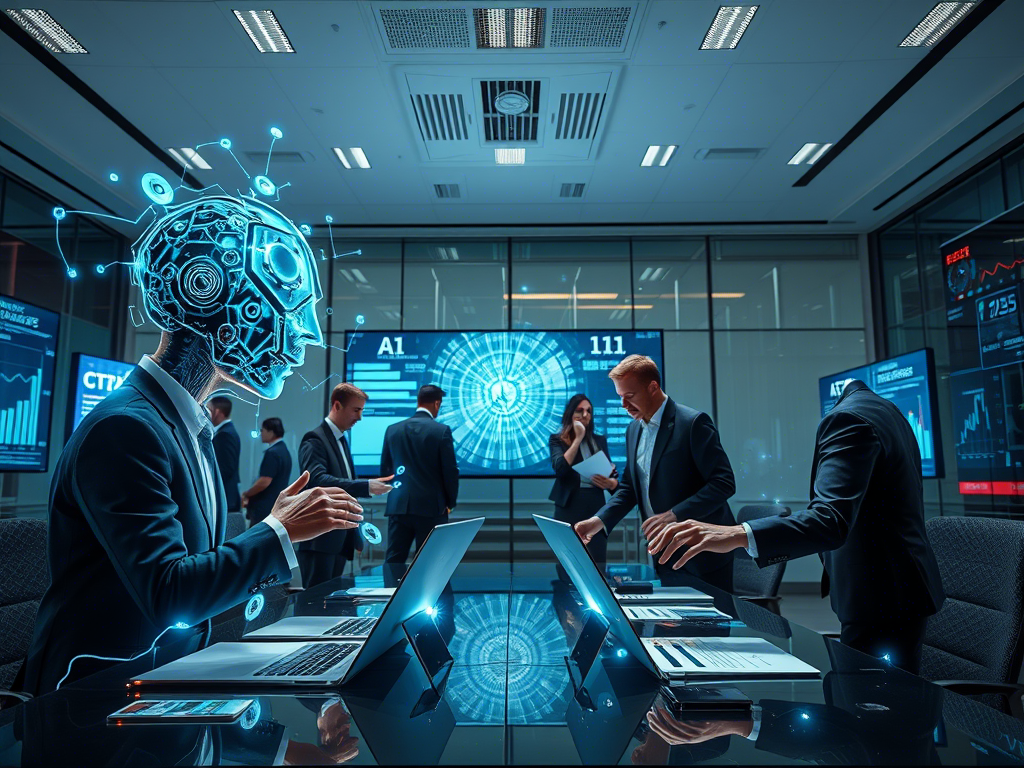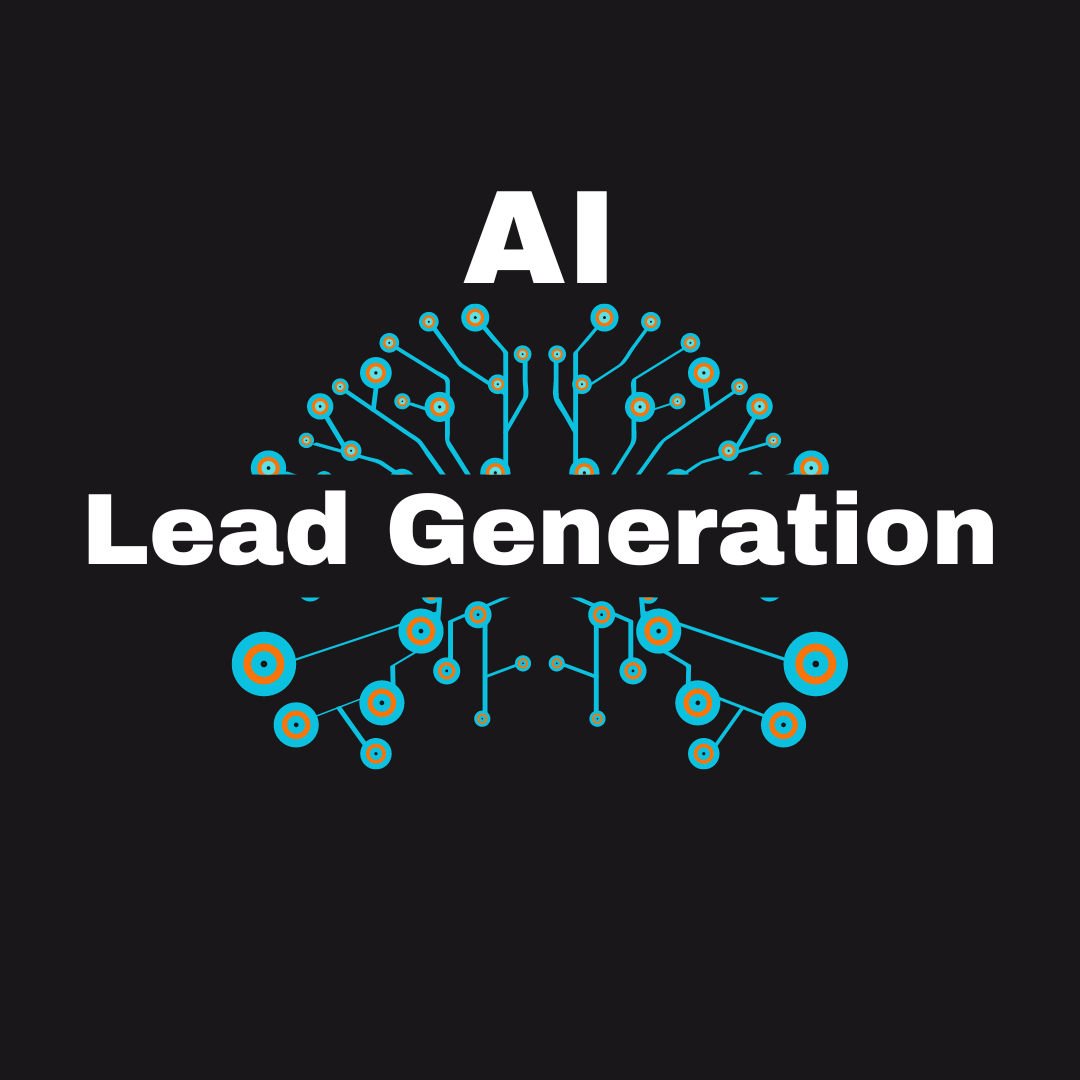AI vs Human Touch:
Which is Better for Lead Generation?
Key Takeaways
- AI excels at data processing, lead scoring, and automating repetitive tasks
- Human touch remains essential for relationship building and complex negotiations
- A hybrid approach combining AI efficiency with human empathy yields best results
- AI tools can qualify leads 5x faster while humans provide nuanced follow-up
- LinkedIn strategies can be optimized through AI assistance and human relationship building
- Success measurement should track both AI metrics and human interaction quality
- The future lies in technologies that enhance human capabilities rather than replace them
Ever wonder if robots are better at finding customers than people? This question bugs many business owners today. I’ve spent over 15 years helping companies find new clients, and I can tell you both AI and humans got special talents in lead generation. Let’s find out how they work together.
Understanding AI’s Role in Modern Lead Generation
AI has changed how we find potential customers. It’s like having a super-fast assistant who never sleeps and can spot patterns in mountains of data that we’d miss.
AI can look at thousands of online clues about people – what websites they visit, what they post on social media, and how they interact with your website. Using this info, AI tools can predict which people are most likely to become customers. This helps companies focus their efforts on the right prospects.
One big advantage of AI is how fast it works. AI email outreach platforms can send personalized messages to thousands of potential customers at once, and even adjust these messages based on how people respond. I once implemented an AI email system for a tech company that increased their response rates by 42% in just two weeks.
AI also helps with sorting leads by quality. It can quickly rank prospects based on how likely they are to buy, saving sales teams from wasting time on dead ends. The best AI systems can even predict which products a customer might want based on their behavior.
Here’s a simple breakdown of what AI does best in lead generation:
- Processes vast amounts of data quickly
- Identifies patterns humans might miss
- Automates repetitive tasks like initial emails
- Scores and ranks leads based on conversion likelihood
- Predicts customer behavior based on past data
- Works 24/7 without getting tired
But AI isn’t perfect. It can’t understand emotions or build real relationships. That’s where humans come in.

The Irreplaceable Human Element
You know when you talk to someone and just get a good feeling about them? That’s something AI can’t replicate. Humans pick up on tiny signals – a slight hesitation in someone’s voice, body language, or emotional cues that show what they really need.
In my experience working with hundreds of sales teams, the human touch makes all the difference in complex sales. When I helped a software company implement a hybrid approach, their sales team closed 35% more deals by focusing on relationship building after AI identified the best leads.
Human sales pros can:
- Read emotional cues and adjust their approach
- Build genuine trust through authentic connections
- Handle objections with empathy and understanding
- Adapt to unexpected situations during sales conversations
- Connect on a personal level that builds loyalty
When deals get complicated or when you’re selling expensive products, nothing beats a skilled human who understands the prospect’s specific needs. Ways to supercharge your lead qualification process often involve training humans to ask better questions after AI has done the initial screening.
The magic happens when sales reps use their creativity to solve problems in ways AI would never think of. I’ve seen reps make surprising connections between a prospect’s personal interests and product benefits that no algorithm could have predicted.
Combining Forces: The Hybrid Approach
So what’s the answer? Should you pick AI or humans for lead generation? The truth is, you need both. They’re not enemies – they’re partners.
The best approach I’ve seen in my years as a lead generation consultant is using AI for what it does best, then bringing in humans for what they do best. This creates a system that’s stronger than either one alone.
Here’s how it typically works:
- AI systems scan and analyze thousands of potential leads
- The AI scores and ranks these leads based on likelihood to convert
- Human sales reps get a pre-qualified list of high-potential prospects
- Reps use AI-generated insights to personalize their approach
- Humans focus on building relationships and addressing specific needs
This combination works because it lets each do what they’re good at. AI handles the repetitive, data-heavy tasks, while humans handle the relationship-building and complex problem-solving.
A client in the financial services industry tried 5 AI-driven lead nurturing strategies that allowed their team to focus only on the most promising leads. This increased their conversion rate by 28% while reducing the sales team’s workload.
The hybrid approach works best when:
- AI and humans regularly share information
- Sales teams are trained to use AI insights effectively
- The process is continuously improved based on results
- Customer feedback informs both AI algorithms and human approaches
Think of it like a team sport – AI is great at defense, gathering information and blocking bad leads, while humans excel at offense, making connections and closing deals.
AI Tools That Complement Human Efforts
What specific AI tools help the most in lead generation? Based on my work with dozens of companies, these are the capabilities that make the biggest difference:
Predictive Lead Scoring
AI can analyze your past customers and find patterns that indicate who’s most likely to buy. This helps sales teams focus on high-potential prospects.
AI-powered lead generation tools use factors like:
- Website behavior (pages visited, time spent)
- Content engagement (downloads, video views)
- Email interaction (opens, clicks, replies)
- Social media activity
- Company growth signals
- Technographic data (tools they already use)
Conversational AI
Chatbots and virtual assistants can engage visitors 24/7, qualify leads through natural conversation, and book meetings for your sales team.
A software company I worked with implemented AI chatbots on their website and increased qualified leads by 67% within three months. The key was designing the chatbot to ask the right qualifying questions before connecting prospects with human reps.
Personalization Engines
AI can tailor content, emails, and offers based on individual behavior and preferences. This increases engagement rates significantly.
When implementing hyper-personalized lead gen techniques, consider:
- Dynamic website content that changes based on visitor behavior
- Personalized email sequences adjusted in real-time
- Custom offers based on browsing history
- Tailored follow-up content based on engagement
The top 10 AI lead generation tools on the market today combine these capabilities in various ways. The best choice depends on your specific business needs, but I’ve found tools that integrate with your existing CRM provide the smoothest experience.
Leveraging LinkedIn in the Hybrid Lead Generation Model
LinkedIn is a goldmine for B2B lead generation, and the platform gets even more powerful when you combine AI tools with human relationship-building skills.
Here’s how to make the most of LinkedIn in your hybrid approach:
AI-Assisted Targeting
Use LinkedIn Boolean search techniques to find exactly the right prospects. AI tools can help refine these searches based on conversion patterns and expand your targeting beyond obvious criteria.
One manufacturing client used this approach to identify a new segment of prospects they hadn’t considered before, resulting in a 23% revenue increase from previously untapped markets.
Content Optimization
AI can analyze which LinkedIn content drives the most engagement from your target audience and suggest topics and formats for future posts. This helps you transform your LinkedIn profile into a lead gen machine.
Human creativity still matters for creating compelling content, but AI can help identify what’s most likely to resonate with your audience.
Group Engagement
LinkedIn groups remain an excellent source of qualified leads. AI tools can monitor group discussions and alert you to conversations where your expertise would be valuable.
The human touch is crucial here – no one likes obviously automated responses in groups. I’ve coached teams to use AI to find opportunities but always engage authentically as real people.
Automated Outreach with Human Follow-up
LinkedIn automation tools can handle initial connection requests and messages, but human sales reps should take over once a prospect responds.
A well-designed sequence might look like:
- AI identifies ideal prospects based on your customer profile
- Automated connection request sent (personalized by AI)
- Initial follow-up message delivered automatically
- Human rep notified when prospect engages
- Personal conversation begins with context from AI
This approach can deliver spectacular results. A SaaS company I advised increased their LinkedIn-generated meetings by 340% using this hybrid model.
Measuring Success in Hybrid Lead Generation
How do you know if your hybrid approach is working? You need to track both AI and human performance metrics.
AI Performance Metrics
- Lead scoring accuracy (% of high-scored leads that convert)
- Automation efficiency (time saved vs. manual processes)
- Data enrichment quality (completeness and accuracy of lead data)
- Campaign optimization metrics (improved open/click/response rates)
Human Performance Metrics
- Conversion rate from qualified lead to opportunity
- Deal size and complexity of closed business
- Customer satisfaction and relationship strength
- Upsell and cross-sell success rates
Demystifying analytics is crucial for evaluating your program’s success. The best approach is creating a dashboard that shows both AI and human contributions to the sales process.
One retail client created a simple scoring system:
- AI gets points for correctly identifying high-potential leads
- Humans get points for successful relationship building and closing
- Both share credit for the final outcomes
This approach prevents the common problem of teams competing rather than collaborating. When I implemented this at a healthcare tech company, it improved collaboration between marketing (who managed the AI) and sales (who handled relationships).
Future Trends in AI and Human Lead Generation
What’s next for lead generation? Based on emerging patterns I’m seeing with clients and industry research, these trends will shape the future:
AI That Enhances Human Capabilities
Rather than replacing humans, new AI tools focus on making salespeople more effective by:
- Providing real-time conversation coaching during calls
- Suggesting personalized follow-up content for specific prospects
- Automating meeting scheduling and preparation
- Creating custom presentations based on prospect needs
Predictive Intent Analysis
Advanced AI will move beyond basic lead scoring to understand the specific intent behind customer actions:
- Why they’re researching your solution now
- What problem they’re trying to solve
- Their likely timeline for purchase
- Potential obstacles in their buying process
Voice and Visual Search Optimization
As more searches happen through voice assistants and image recognition, lead generation will adapt with:
- Voice-optimized content that answers specific questions
- Visual content designed to be found through image search
- New ways to capture interest through multimedia channels
The game-changing AI tools for 2024 are already incorporating these capabilities. Companies that experiment with these new approaches while maintaining the human element will stay ahead.
Through all these changes, the fundamental principle remains the same: use technology to handle scale, data, and repetitive tasks, while leveraging human creativity, empathy, and relationship skills for what they do best.

Frequently Asked Questions
Can AI completely replace humans in lead generation?
No. While AI excels at data processing and identifying patterns, humans remain essential for building relationships, handling complex objections, and creating authentic connections that drive major purchases. The most effective approach combines AI’s efficiency with human empathy and insight.
How much can AI improve lead generation results?
Companies implementing AI-assisted lead generation typically see 3-5x improvements in lead qualification efficiency and 20-40% increases in conversion rates when using a hybrid approach. Results vary by industry and implementation quality.
What’s the biggest mistake companies make with AI lead generation?
The most common mistake is treating AI as a replacement rather than a complement to human efforts. Companies that succeed view AI as a tool to enhance their team’s capabilities, not replace their people.
How difficult is it to implement AI lead generation tools?
Implementation difficulty varies widely depending on your existing systems and data quality. Most companies can implement basic AI lead scoring and automation in 2-3 months, while more sophisticated systems may take 6+ months to fully deploy and optimize.
Do small businesses need AI for lead generation?
Even small businesses can benefit from basic AI lead generation tools. Many affordable solutions exist that can help identify better prospects, automate routine follow-up, and provide insights about potential customers. The key is starting with simple applications and expanding as you see results.
How do you maintain the human touch while scaling with AI?
The best practice is to use AI for initial qualification and routine communications, while ensuring human involvement at critical decision points in the customer journey. Clearly define which parts of the process benefit most from personal interaction, and design your systems to facilitate those connections.
What skills should sales teams develop to work effectively with AI?
Sales professionals should focus on developing deep expertise in their product and industry, strong emotional intelligence, creative problem-solving abilities, and consultative selling skills. They should also be comfortable using AI-generated insights to inform their approach without becoming overly dependent on technology.
